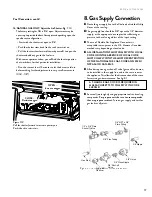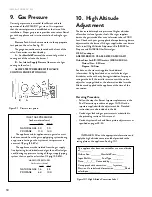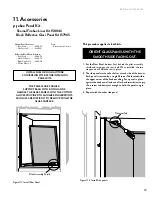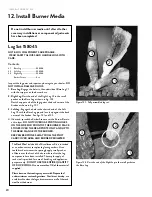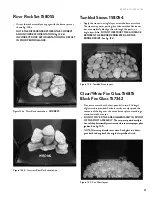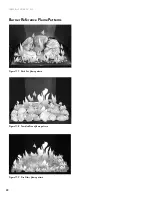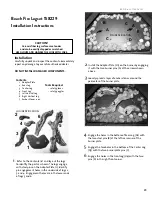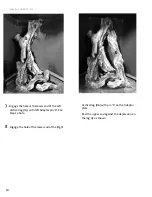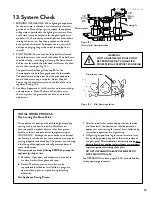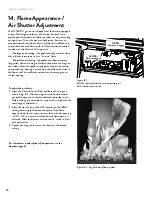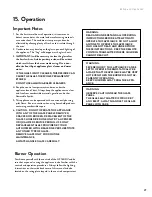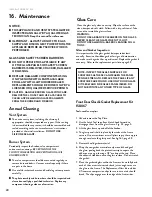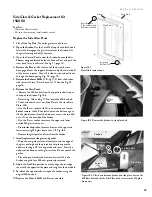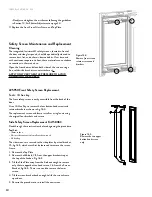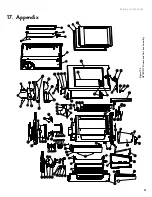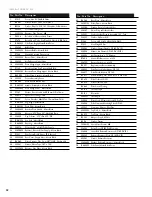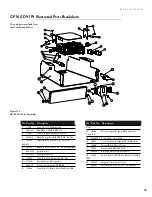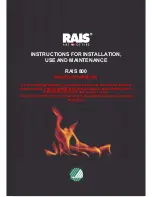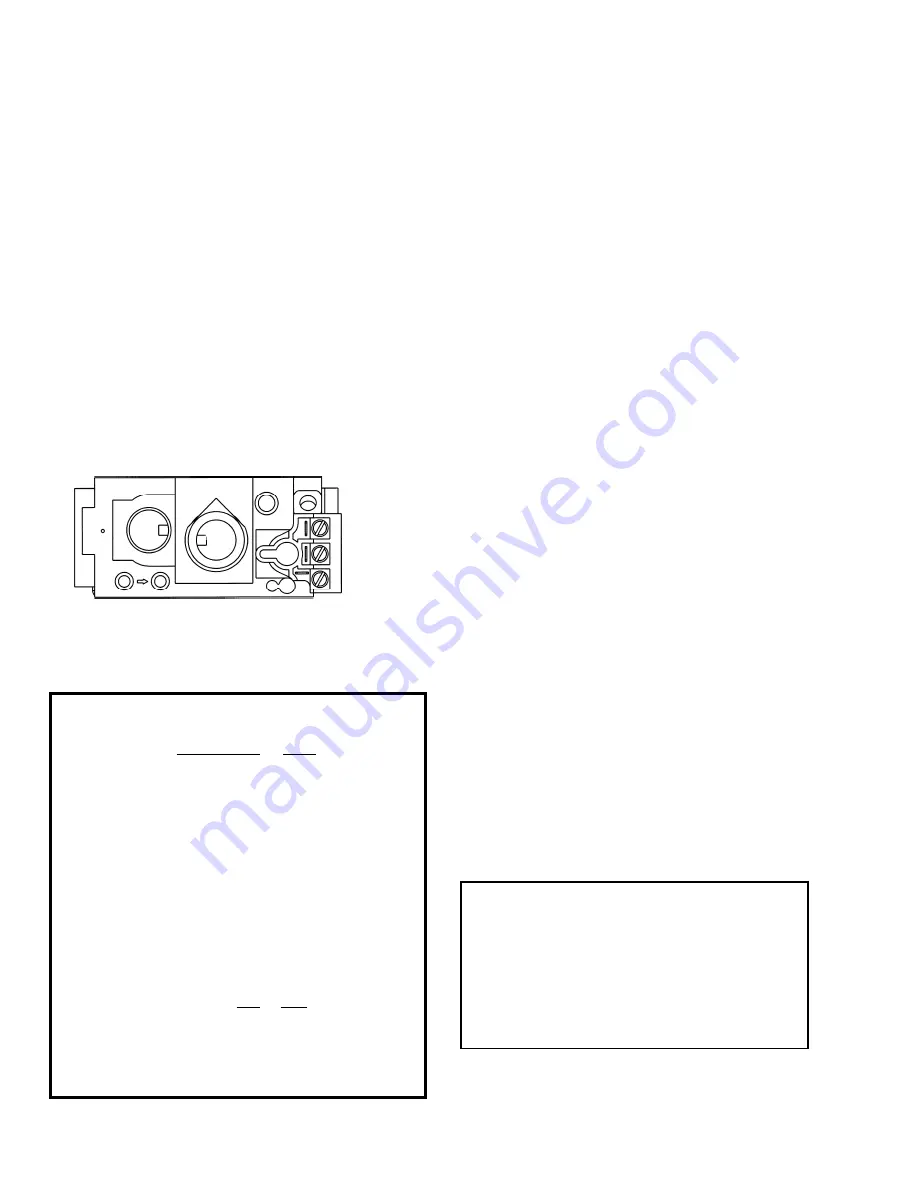
18
130112_Rev 2 GF 160 DV 1/22
9. Gas Pressure
Correct gas pressure is essential for efficient and safe
operation of the GF 160 DV gas stove. It is important
that the correct pressure is established at the time of the
installation. Proper gas pressure provides a consistent flow of
gas to the appliance and is instrumental in checking for gas
leaks.
Pressure Test:
Attach a manometer to the appropriate
test point on the valve. See fig. 9.1.
The gauge connections are located on the front of the
valve. Connections are identified by:
A - for Manifold Pressure
(the amount of gas that is
coming out of the valve to the burner.)
B - for Inlet or Supply Pressure
(the amount of gas
coming to the valve.)
ALWAYS TEST PRESSURES WITH VALVE
CONTROL KNOB SET ON HIGH.
INLET GAS PRESSURES
(inches water column)
MIN MAX
NATURAL GAS 5.0
7.0
PROPANE 11.0 14.0
The appliance and its appliance main gas valve must
be disconnected from the gas supply piping system during
any pressure testing on that system at test pressures in
excess of 1/2 psig (3.5 kPa).
The appliance must be isolated from the gas supply
line by closing its individual manual gas shut-off valve (gas
cock) during any pressure testing of the gas supply piping
system that is equal to or less than 1/2 psig (3.5 kPa).
MANIFOLD PRESSURES
(inches water column)
MIN MAX
NATURAL GAS 1.6
3.5
PROPANE 6.4 10.0
10. High Altitude
Adjustment
The decreased atmospheric pressure of higher altitudes
affects heat value of gaseous fuels. Most gas suppliers
derate the gas intended for use at elevations above 2000
feet. Check with your gas supplier before performing derate
adjustment to the burner. If the gas supplier does not derate
fuels, install High Altitude Adjustment Kit 158059 for
Propane and Kit 158060 for Natural gas.
U.S & Canada per
ANSI Z21.88-2019 • CSA 2.33-2019, CAN/CGA 2.17
Orifice Sizes for 610-1370 meters (2000-4500 ft.):
Natural Gas: 2.30 mm
Propane: 1.40 mm
See data on the stove rating plate for additional
information. At higher altitudes, consult the local gas
distributor or the authority having jurisdiction for proper
rating methods. If the installer must convert the unit to
adjust for varying altitudes, the information label must be
filled out and applied to the appliance at the time of the
conversion.
INSTALLER: Fill out the appropriate information and
apply the high altitude conversion label provided to the
rating plate on the appliance. See fig. 10.1.
Derating Procedure
• Follow the steps for Burner Injector replacement in the
Fuel Conversion procedure on pages 14-15. Use the
injectors supplied with the adjustment kit. Detailed
instructions are also included in the kit.
• Conduct gas leak and gas pressure tests as detailed in
the preceding section of this manual.
• Conduct system check and flame picture adjustments as
specified on pages 23-24.
Figure 10.1. High Altitude Conversion Label.
This appliance has been converted for use at an altitude
of___________ .
Orifice Size: __________ Manifold Press. _______
Input Btu/Hr. _________ Fuel Type ___________
Date: ___/___/___ Converted by:_____________
Cet appreeil a été converti au _____ Injecteur_____
Pression à la tubulure d’alimentation ___________Déoit
calorifique ___________
Figure 9.1. Pressure test points.
B
A














